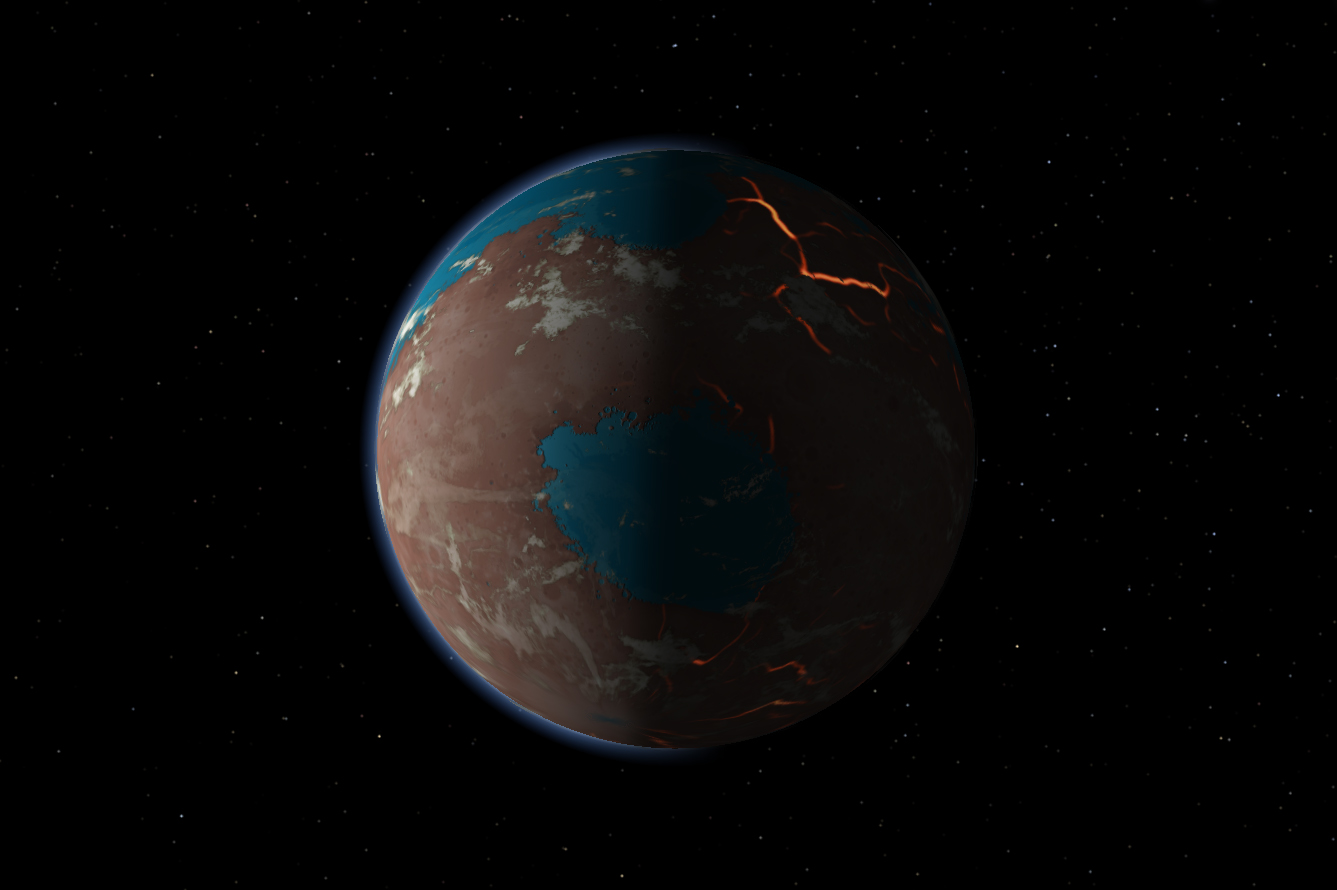

Scientists developed this illustration of how early Mars may have looked, showing signs of liquid water, large-scale volcanic activity and heavy bombardment from planetary projectiles. SwRI is modeling how these impacts may have affected early Mars to help answer questions about the planet’s evolutionary history. Image Credit: SwRI/Marchi
There are around 61,000 meteorites on Earth, or at least that’s how many have been found. Out of those, about 200 of them are very special: they came from Mars. And those 200 meteorites have been important clues to how Mars formed in the early Solar System.
We know that Mars was a very different place in the past. Mars’ oldest surfaces show signs of water, volcanic activity, and impact from planetesimals, which are defined as proto-planets up to about 1930 km (1200 miles) in diameter. But many of the clues to Mars’ formation are erased by the passage of billions of years, except for the meteorites.
Some impacts on Mars were powerful enough to eject meteors into space, and some of those meteors struck Earth as meteorites. Those meteorites contain large variations of elements like tungsten and platinum. Tungsten and platinum have an affinity for iron, and during Mars’ early, molten days, tungsten and platinum would’ve sunk to the planet’s core along with the iron.
So the Martian meteorites that we’ve found on Earth are a sample of the Martian crust at the initial time of impact. Since the tungsten and platinum weren’t present in the crust at the time of impact, having sunk to the core, they must have come from somewhere else. A new study says that the tungsten and platinum in the meteorites came from the crust of planetesimals that struck Mars, and were not from Mars’ original crust. Instead, Mars took longer to form than thought, and during that time planetesimals slammed into Mars, creating that crust that’s been sampled by the meteorites.
The study is titled “A compositionally heterogeneous martian mantle due to late accretion.” The lead author is Simone Marchi from the Southwest Research Institute (SwRI). The paper is published in the journal Science Advances.
If planetesimals deposited their tungsten and platinum on the Martian surface, it means that these planetesimals struck Mars later in their history, after the planet had cooled and the primary core had already formed. By extension, this means that Mars took longer to form than originally thought. Isotope ratios in the meteors from radioactive decay in the crust reinforce the idea that Martian formation took more time.
Previously, the evidence looked like Mars formed in about 2 to 4 million years. But that conclusion was based heavily on the Martian meteorites and their ratio of tungsten isotopes. This new study suggests that the limited number of those meteorites available for study biased the result.
“We knew Mars received elements such as platinum and gold from early, large collisions. To investigate this process, we performed smoothed-particle hydrodynamics impact simulations,” said SwRI’s Dr. Simone Marchi, lead author of a Science Advances paper outlining these results. “Based on our model, early collisions produce a heterogeneous, marble-cake-like Martian mantle. These results suggest that the prevailing view of Mars formation may be biased by the limited number of meteorites available for study.”
Tungsten isotope ratios in the meteorites have led to the conclusion that Mars formed in about 2 to 4 million years. But collisions with planetesimals with their own crusts could have altered the tungsten ratio balance in Mars’ crust, and that would suggest that it took up to 20 million years for Mars to form. And that’s what the team’s model shows.
“Collisions by projectiles large enough to have their own cores and mantles could result in a heterogeneous mixture of those materials in the early Martian mantle,” said co-author Dr. Robin Canup, assistant vice president of SwRI’s Space Science and Engineering Division. “This can lead to different interpretations on the timing of Mars’ formation than those that assume that all projectiles are small and homogenous.”
One of the problem with the Martian meteorites is that we don’t know exactly where they originated from on Mars, and we don’t know if they’re a representative sample of the entire crust, or if they’re from only a few locations. With only about 200, it’s unlikely that they’re a diverse sample. In fact, it’s more likely that all of the Martian meteorites originate from relatively few impacts.
This new study shows that different locations on the Martian crust could have received different concentrations of materials from different large projectiles. That entails differing concentrations of iron-loving elements.
The difficulty in understanding Mars comes down to a lack of samples. Martian meteorites, while compelling and interesting scientifically, are not a representative sample. Future missions to Mars will hopefully return more samples for study. With those in hand, scientists will be able to get a better idea of how variable iron-loving rocks are in the Martian crust in present day.
That in turn will help us understand the planet’s formation history.
“To fully understand Mars, we need to understand the role the earliest and most energetic collisions played in its evolution and composition,” Marchi concluded.
If you were Captain of the first USS Enterprise, where would you go!? Humanity is…
Now is the best time to observe Mars in 2025. Mars from 2014. Credit: Paul…
Scheduled for launch in 2027, the Nancy Grace Roman Telescope is slowly being readied for…
Few places in the solar system are better suited to a balloon than Titan. The…
We reported before about a NIAC-funded project known as the Lofted Environment and Atmospheric Venues…
The InSight Lander arrived on Mars in 2018 to study the planet's interior. Its mission…